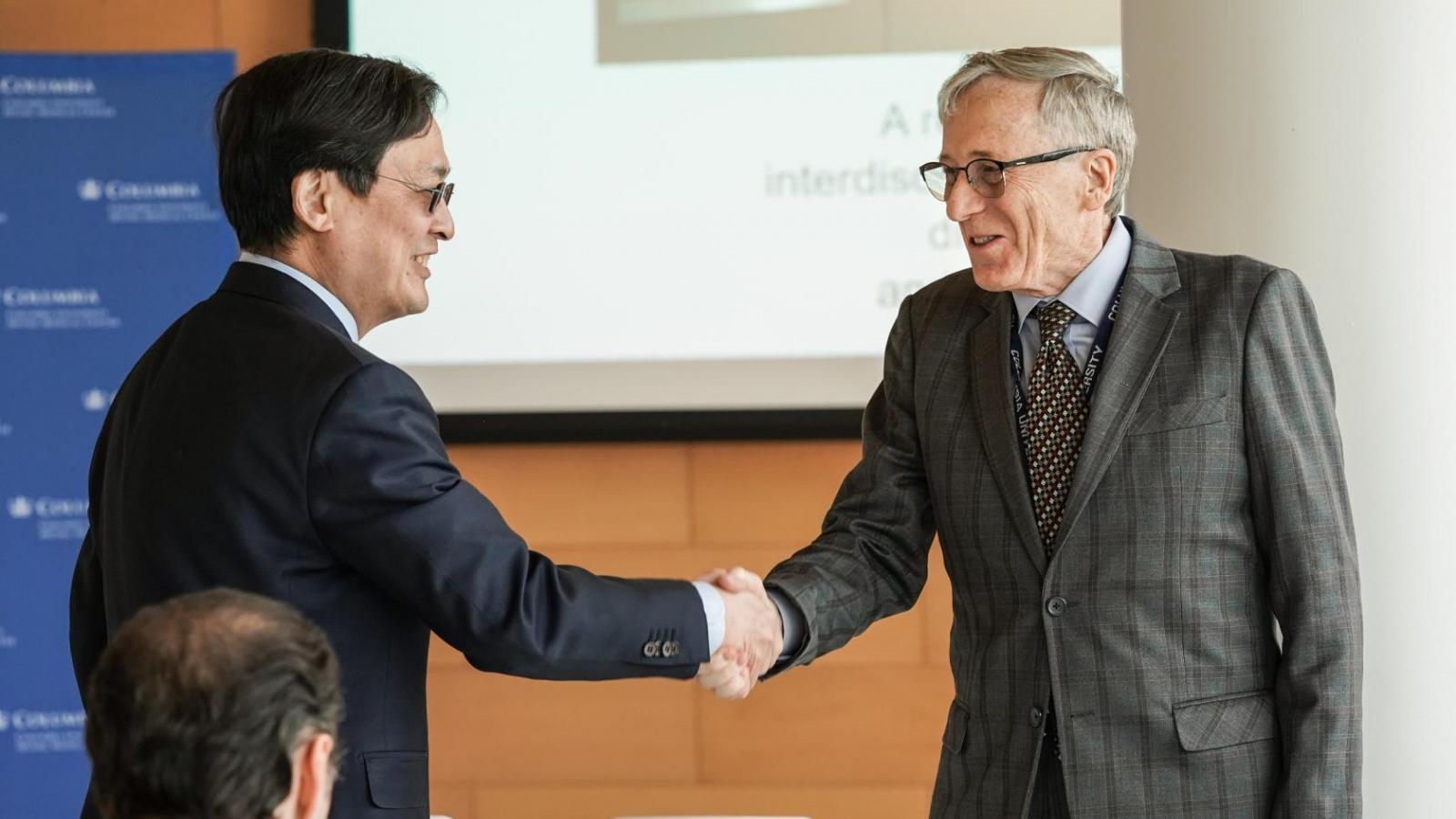Center for Dental and Craniofacial Research Opens at Columbia
Uniting investigators in dental medicine, bioengineering, data science, and other fields, Columbia University’s Center for Dental and Craniofacial Research (CDCR) recently launched as a resource for accelerating scientific discovery and therapy development in oral and craniofacial health. A celebration on Jan. 30, 2020, hosted by center director Gordana Vunjak-Novakovic, PhD, University Professor and the Mikati Foundation Professor of Biomedical Engineering, welcomed colleagues from across the University to mark the opening of the CDCR.
“The need for such a center is very clear, because research has been and will stay the engine behind advances in training of practitioners of dental medicine, better clinical practice, and eventually in healthier lives for all of us,” said Vunjak-Novakovic, who also holds appointments at the College of Dental Medicine (CDM) and the Department of Medicine.
The CDCR will connect investigators, provide access to state-of-the art instrumentation and equipment, and offer opportunities, such as seminars and workshops, for learning and sharing. Four symposia, each focusing on one of the four initial areas of interest—regenerative medicine, the genetics and biology of craniofacial disorders, cancer, and models of disease—are planned for this year “so that we can bring people together, better understand where we have synergies to work together, and identify the additional areas that may be of interest to us,” said Vunjak-Novakovic.
Two associate directors from CDM are leading the center alongside Vunjak-Novakovic: Mildred Embree, DMD, PhD, the Dr. Edwin S. Robinson Assistant Professor of Dental Medicine, and Chang Hun Lee, PhD, Associate Professor of Craniofacial Engineering (in Dental Medicine). CDCR operations are supported by laboratory manager Katherine Cunningham.
Amplifying research efforts and impact
The opening of the CDCR “signifies an incredible opportunity for CDM to grow its research enterprise and to build bridges across the medical center, the U.S., and the globe,” said Embree. “I think the College of Dental Medicine is well positioned to be a world academic premier institute for dental, oral, and craniofacial research. The CDCR will help do that: It will cultivate new leaders in research, it will help integrate basic science and clinical research, and it will help facilitate new scientific discoveries and innovations.”
The CDCR is among several recent efforts by the dental school to incorporate cross-disciplinary expertise and ultimately transform the field of dental medicine. Notably, the Center for Precision Dental Medicine, established in late 2017, has augmented dental education and care through the cutting-edge technology and strong emphasis on data science. Biometric data captured by the dental chairs, for example, are used to measure stress in patients, and overhead cameras and equipment usage tracking provide instructors with new ways to monitor trainees. Researchers applying bioinformatics methods to those data sets, now integrated with electronic health records for patients across Columbia University Irving Medical Center, have the potential to reveal new insights about health and treatment outcomes.
Collaboration is crucial
A fundamental principle behind the CDCR is that interdisciplinary partnerships drive progress.
“Today, the most exciting advances in science and technology and in clinical practice really happen at the interfaces of disciplines,” said Vunjak-Novakovic. “It’s easy to list examples [of how] other sciences that seem very far away from dental research and dental practice have contributed to both of these. Just remember how much has been done due to advances in systems biology, cancer biology, 3D printing, and immunology. This is the reason why we are envisioning that our center will support investigators across the campuses of Columbia University.”
Underlining that theme, more than a dozen speakers representing various schools, institutes, departments, and offices from around the University delivered brief remarks at the opening event. Many reflected on past joint efforts and expressed excitement for the innovations the CDCR may catalyze.
“One of the really remarkable things about this University is the way we collaborate across schools,” observed Lee Goldman, MD, Chief Executive of Columbia University Irving Medical Center. “Oftentimes people think of universities as being the epitome of silos. We take great pride in being just the opposite.... It’s the power of a great university that makes these things possible.”
Photos by Monika Graff







